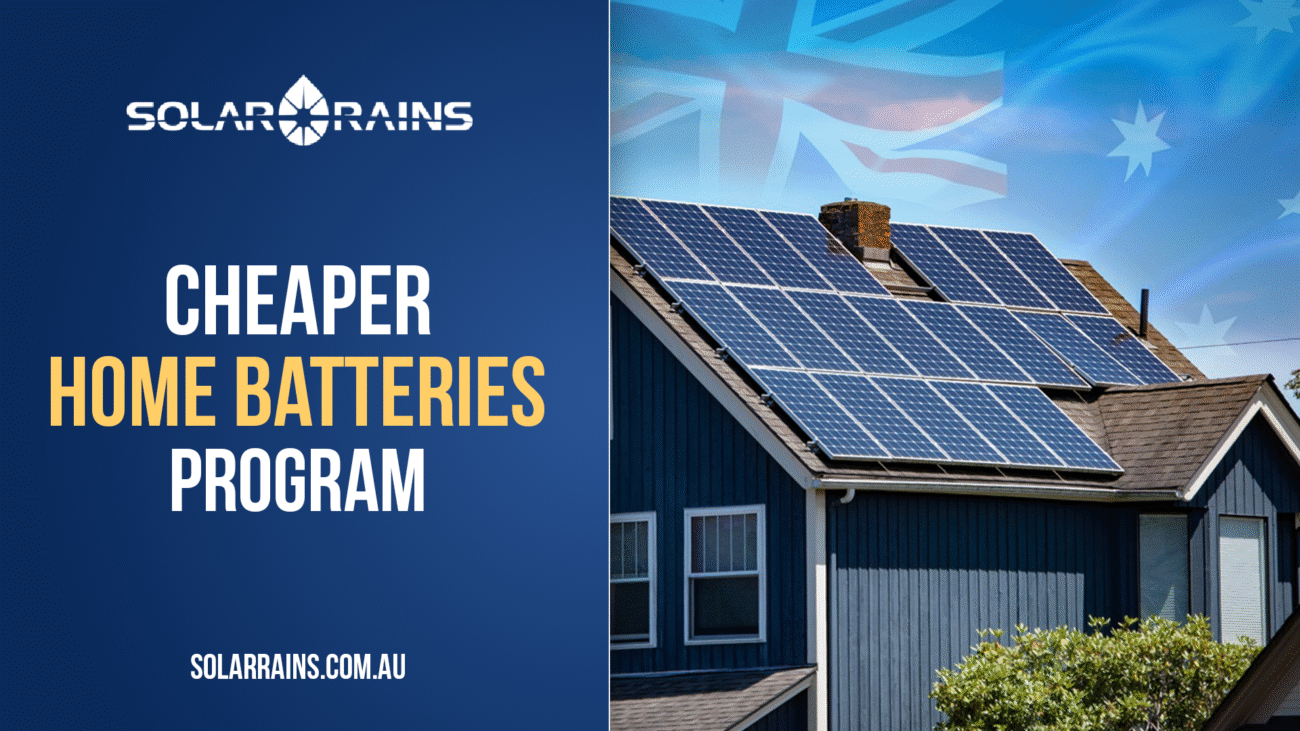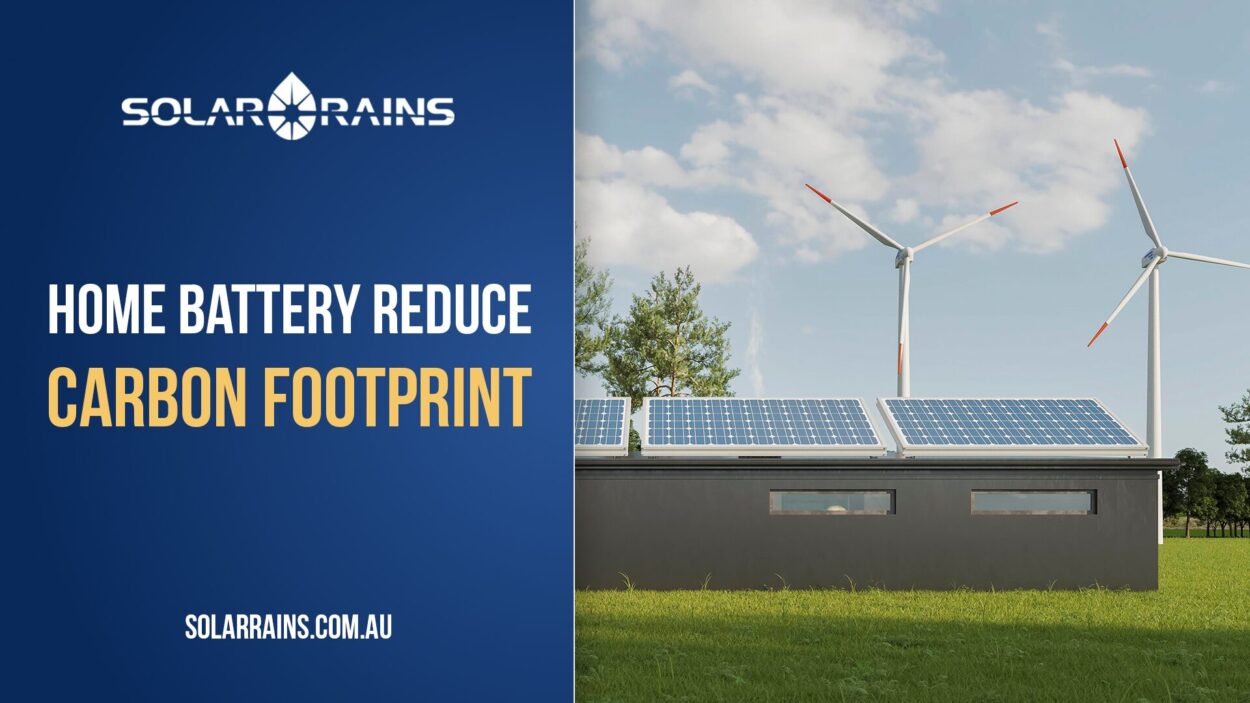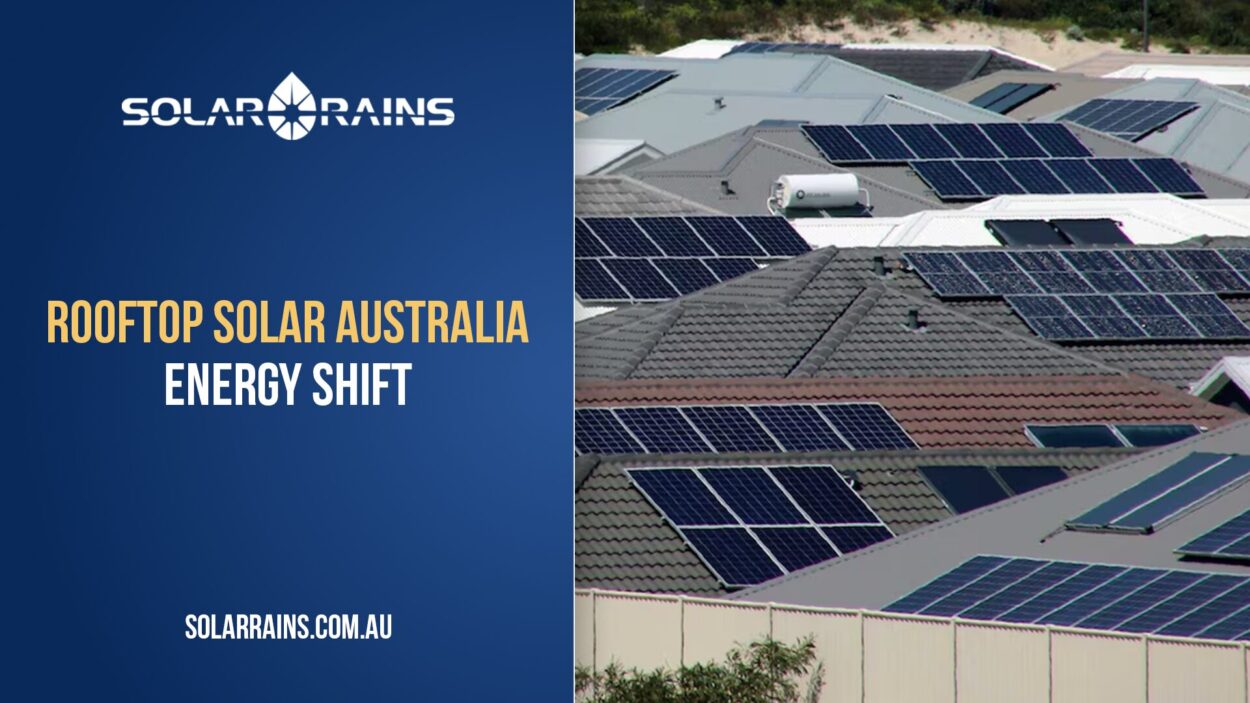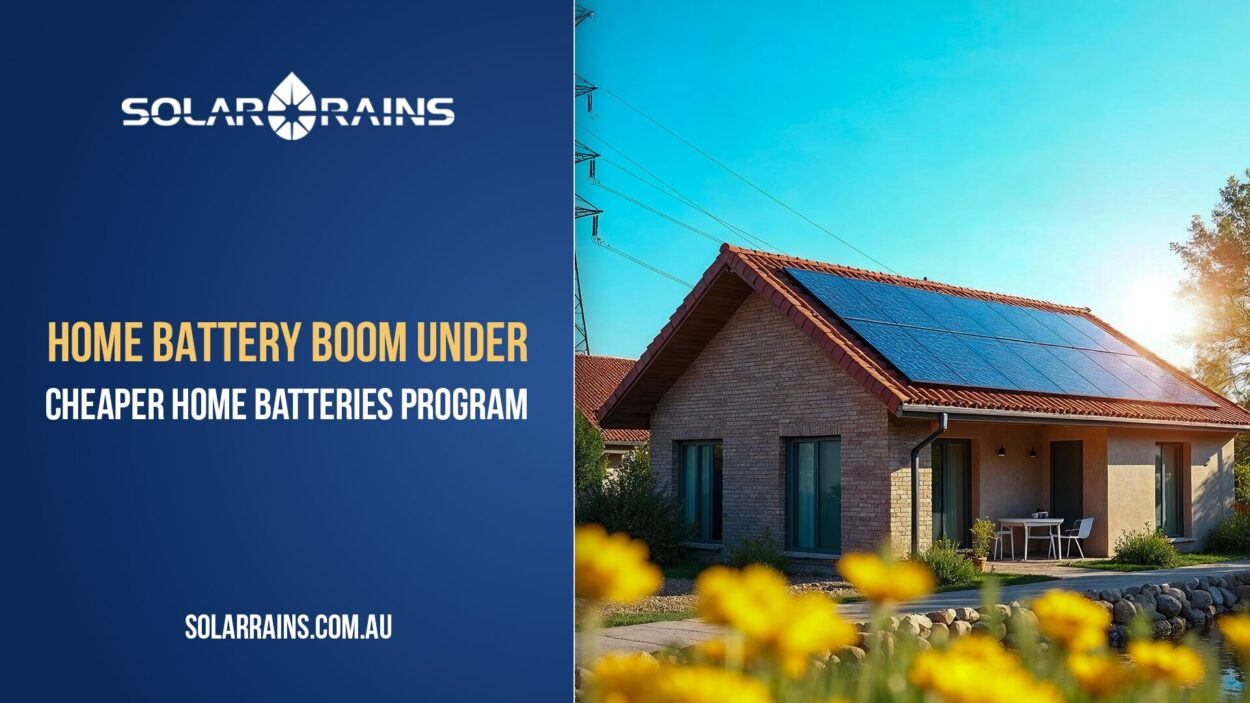As the cost of living continues to rise and electricity prices remain volatile, Australia is taking a bold step to support energy resilience and household savings. The Cheaper Home Batteries Program, set to launch on 1 July 2025, aims to accelerate the uptake of home batteries through upfront discounts of approximately 30%. This initiative is part of the Australian Government’s broader climate strategy and builds on the proven success of the Small-scale Renewable Energy Scheme (SRES).
In this comprehensive guide, we explore how the program works, who’s eligible, and what it means for both households and the energy grid—helping you make the most of your solar power.
What is the Cheaper Home Batteries Program?
The Cheaper Home Batteries Program is a $2.3 billion federal scheme designed to make solar battery storage more accessible to households, small businesses, and community organisations. From 1 July 2025, eligible participants will receive a 30% upfront discount on the cost of installing home batteries (systems under 100 kWh), helping to shift solar energy generated during the day into usable power at night.
This program is administered by the Clean Energy Regulator (CER) and builds on the existing SRES regulatory framework—meaning it leverages trusted safeguards for consumer protection, safety, and product quality.
Main goals
- Help Australians reduce their power bills by storing their own solar energy.
- Ease pressure on the grid during peak hours.
- Extend the SRES to include batteries, not just rooftop solar panels.
Why Home Battery Adoption Matters
Australia leads the world in rooftop solar adoption, with over 4 million PV systems installed. However, less than 3% of those systems include battery storage. That’s a significant gap considering how batteries enhance energy independence, provide backup during outages, and enable participation in Virtual Power Plants (VPPs).
But why are so few households using batteries? The answer is simple: upfront cost.
With installed prices ranging from $6,000 to $15,000 depending on brand and capacity, solar battery adoption has been financially out of reach for many Australians—until now.
The Cheaper Home Batteries Program bridges that affordability gap, making batteries a realistic upgrade for more households and businesses.
How the Program Works
Eligible customers purchasing through authorised solar suppliers or installers will receive an upfront discount of ~30%, automatically deducted at the point of sale. The size of the discount depends on the usable battery capacity (kWh), and it will gradually phase down until 2030.
The scheme covers batteries installed from 1 July 2025, whether paired with new solar systems or retrofitted to existing PV setups.
Program Features
- Available nationwide – all states and territories.
- Administered by CER – using the trusted SRES framework.
- No cost passed on to consumers – the federal government fully funds the discount.
- Annual review – discount rates may adjust as battery prices fall.
Important note: This is not a rebate you claim later—discounts are applied directly at purchase through accredited sellers.
Eligibility & Installation Requirements
The program is open to homeowners, tenants (with permission), small businesses, and community organisations.
Basic Eligibility
- Battery capacity < 100 kWh.
- System must meet electrical safety and VPP compatibility standards.
- Installed by a CEC-accredited installer and on the approved product list.
- Installation must occur on or after 1 July 2025.
While full eligibility details are pending regulatory updates, you can monitor progress via the Clean Energy Regulator website.
Installer & Product Accreditation
- Installers must complete training to meet updated safety protocols.
- Battery products must be listed on the Clean Energy Council (CEC) approved list.
Complementary State & Territory Programs
The national Cheaper Home Batteries Program can be combined with state-based incentive programs. However, eligibility conditions vary, and participants must check if dual participation is allowed.
Examples:
- Victoria: Offers battery rebates under the Solar Homes Program.
- South Australia: VPP participation incentives for low-income households.
- NSW: New Product Lifecycle Responsibility Act supports end-of-life battery management.
Tip: Use your state’s renewable energy website or speak to your local solar installer to confirm if programs can be combined.
Environmental Sustainability & Waste Reduction
In line with Australia’s sustainability commitments, the program also includes waste minimisation goals.
The federal government is:
- Investigating circular economy strategies for solar panel and battery disposal.
- Coordinating with states on battery recycling legislation, such as NSW’s new Product Lifecycle Responsibility Act 2025.
- Ensuring consumers aren’t forced to replace functional PV systems just to qualify.
Example: If your rooftop solar system is compliant and compatible, you can add a home battery without removing the existing setup—reducing landfill and saving money.
Key Benefits for Households & Small Businesses
1. Lower Energy Bills
With a battery, you store cheap solar energy during the day and use it during expensive evening hours—cutting reliance on grid electricity.
2. Backup Power
During outages or natural disasters, your home battery can keep lights, fridges, and critical appliances running.
3. Long-Term Savings
While batteries have upfront costs, the program’s discount shortens payback periods to 6–9 years, especially with rising grid prices.
4. VPP Opportunities
Connect your battery to a Virtual Power Plant and earn credits by selling stored power back to the grid.
5. Energy Independence
Control how and when you use energy, instead of depending on grid schedules and peak pricing.
Brands & Products to Watch
Though this blog is for information purposes only, Solar Rains offers a variety of eligible batteries from top brands such as:
- AlphaESS – known for residential battery systems.
- Swatten – stackable batteries ideal for modular growth.
- Deye – commercial-grade battery modules & hybrid systems.
- Dyness – high-capacity batteries for business use.
Explore available commercial and residential batteries at solarrains.com.au
FAQs
It begins on 1 July 2025 and applies to batteries installed from that date onward.
Yes, provided your current system meets safety and VPP requirements.
Yes, if you purchase through a certified solar supplier or installer.
Possibly. Check your state’s terms carefully to ensure eligibility overlap.
No specific cap has been announced, but the discount will decrease yearly until 2030.
Only systems under 100kWh usable capacity are eligible.
Small businesses and not-for-profits are also eligible, as long as their systems meet the criteria.
Early adopters get the highest discounts before the phased reduction begins.
Conclusion: Prepare Now for 2025
The Cheaper Home Batteries Program marks a turning point in Australia’s energy landscape. It gives everyday Australians the opportunity to become energy independent, lower their bills, and contribute to a stable and cleaner grid.
By acting early, you can:
- Lock in the highest available discount
- Prepare your system to meet compliance standards
- Gain peace of mind with backup power & long-term savings
Contact your local solar supplier today or visit Solar Rains to explore battery options, installer referrals, and pre-approval checklists.










